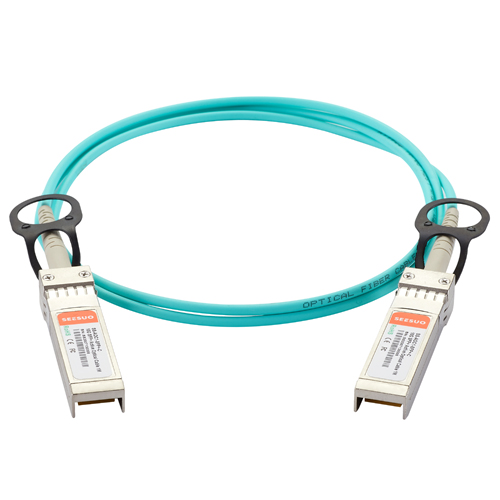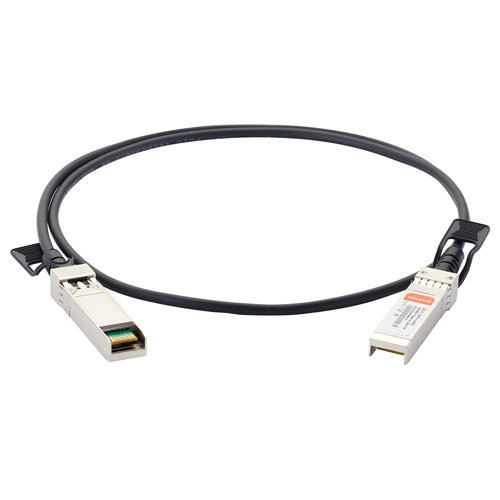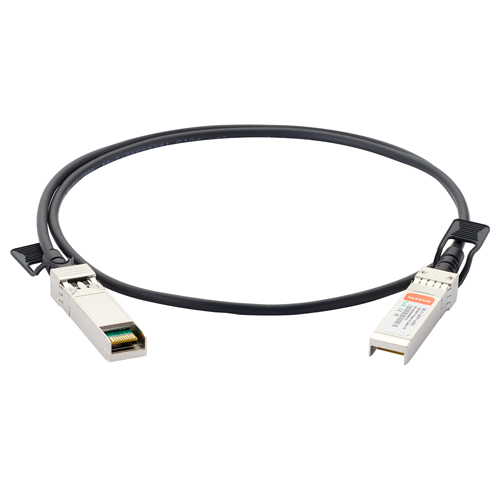- Related articles
- What is SFP Connector?
- Optical Transceivers for Cisco WS-C4900M Switch
- Optical Transceivers for Cisco WS-C2975GS-96PS-LM Switch
- Why Do We Need Optical Fiber to Get to the “Cloud”?
- Optical Transceivers for Cisco WS-C3650-48FQ-L Switch
- All Cisco DWDM-XENPAK-50.92's information (List price, Specs, Datasheet PDF, Compatibility
- Optical Transceivers for Cisco N9K-C9396PX= Switch
- Optical Transceivers for Cisco WS-C2960X-24PD-L Switch
- What is a Gigabit Ethernet Port?
- What is 1000BASE Transceiver?

With the further development of virtualization technology, we will need greater bandwidth and higher data transfer rate to meet the data center personal server operating system and application requirements. As a result, data centers are urgently need cost-effective ways to provide greater bandwidth. 10G SFP+ high speed cable is a high-speed data transmission solution for data center interconnection, is now widely used in 10GbE Ethernet. This article will give you a detailed description of the 10G SFP+ to SFP+ high speed cable and its advantages.


What is 10G SFP+ to SFP+ high speed cable?
In general, 10G SFP+ to SFP+ high speed cable has three types: 10G SFP+ passive copper cable (PCC), 10G SFP+ active copper cable (ACC) and 10G SFP + active optical cable (AOC). They are suitable for network connectivity between racks and adjacent racks, which making them cost-effective.
10G SFP+ Passive Copper Cable (PCC): SFP+ Passive copper cable provides a direct electrical connection between the two ends of the cable with a connection distance of up to 12 m. However, due to the large weight of the cable, and taking into account the problem of signal integrity, its length is generally limited to between 7m and 10m.

10G SFP+ active copper cable (ACC): SFP+ active copper cable provides signal processing electronic equipment to avoid signal loss, thus improving signal quality. Its transmission distance is farther than 10G SFP+ passive copper cable, it can reach 15 ~ 20m.

10G SFP+ to SFP+ Active Optical Cable (AOC): Nowadays, Active Cable (AOC) is accelerating the development of data connection storage, networking and HPC (High Performance Computing) applications. It uses fiber technology for data transmission, replacing the traditional copper cable, reducing the weight of the cable, reducing the wiring density and power consumption.

Why 10G SFP+ to SFP+ high-speed cable is better than 10GBASE-T?
Now, 10GBASE-T does not support the OneConnect adapter due to the power requirements and the high latency of the 10GBASE-T PHY chip. Compared to 10GBASE-T, 10G SFP+ to SFP+ high speed cable has the following advantages:
10G SFP+ to SFP + high speed cable to ensure optimal optical performance and lowest signal latency: in the data center development trend, it can support the wired infrastructure in any place to deal with delay sensitive applications. Compared to 10GBase-T technology and alternative SFP+ technology, it is clear that SFP+ technology ensure the lowest latency and optimal performance in the data center.
10G SFP+ to SFP+ high speed cable, reducing power consumption: SFP+ technology provides far less power consumption than 10GBase-T technology. When the cable deployment in the data center increases from 1000 to 10,000, the cost savings can be made more significantly, and the solution will be more economical.
10G SFP+ to SFP+ high speed cable interconnect solution
High-speed direct-connect solution for data center interconnection, especially 10G SFP+ to SFP+ high-speed cable direct Gigabit Ethernet solutions that not only reduce power consumption, but support modules and scalability as well. Cozlink offers a wide range of high-speed cables that are fully compatible with mainstream brands such as Huawei, Cisco, HP, and Dell.





















































